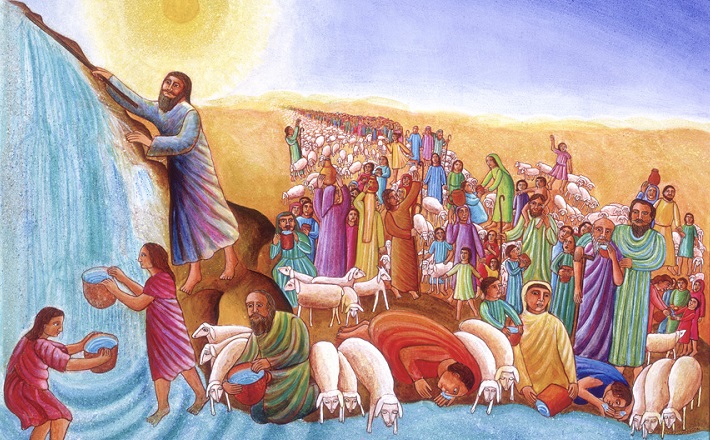Commentary on Hebrews 4:14—5:10
[This is Week 3 of a 5-week preaching series on Hebrews.]
[This is Week 3 of a 5-week preaching series on Hebrews.]
[This is Week 3 of a 5-week preaching series on Hebrews.]
Week 3 (July 28, 2019)
Preaching text: Hebrews 4:14–5:10; accompanying text Matthew 26:36-40
This passage includes an odd pair of words: sympathy and boldness. The term “sympathy” describes Christ’s role as a priest. The word can seem superficial. When someone says “I’m sympathetic” in casual conversation, it can suggest that the person is more or less inclined to see things your way, but is not ready to go beyond that. In Hebrews, however, sympathy conveys Jesus’ depth of feeling for those who are weak. He enters into the struggle.
The writer recognizes that weakness can include moral failing. And when he describes human priests, he acknowledges that this is all too true. People in ministry are flawed human beings. They understand human sin because they share in it, and being honest about that is important for ministry. It allows people to minister as one flawed human being attending to another.
But the writer explains that when he speaks of Jesus’ sympathizing with weakness, it is about the weakness involved in suffering. He portrays Jesus’ anguished prayer in the face of death. He can sympathize or “feel with” people who suffer, because he has suffered, and that experience empowers his ministry.
The human response to Jesus is boldness” (4:16). What is odd is that we might assume that sympathy encourages passivity. If we are objects of sympathy, we might assume that everyone agrees that things are unfortunate but nothing can change. Yet Jesus’ sympathy is designed to awaken a sense of boldness to approach him in prayer. He enters into suffering in order to empower people to move through the suffering to renewed life in grace.


July 28, 2019